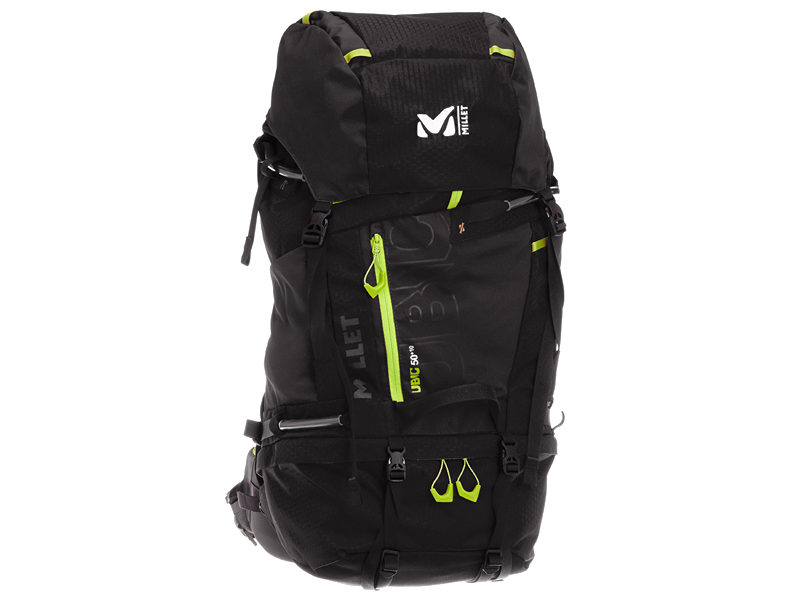Hiking and Trekking: Clothes, footwear, equipment : Routes, areas : Initiation Guide
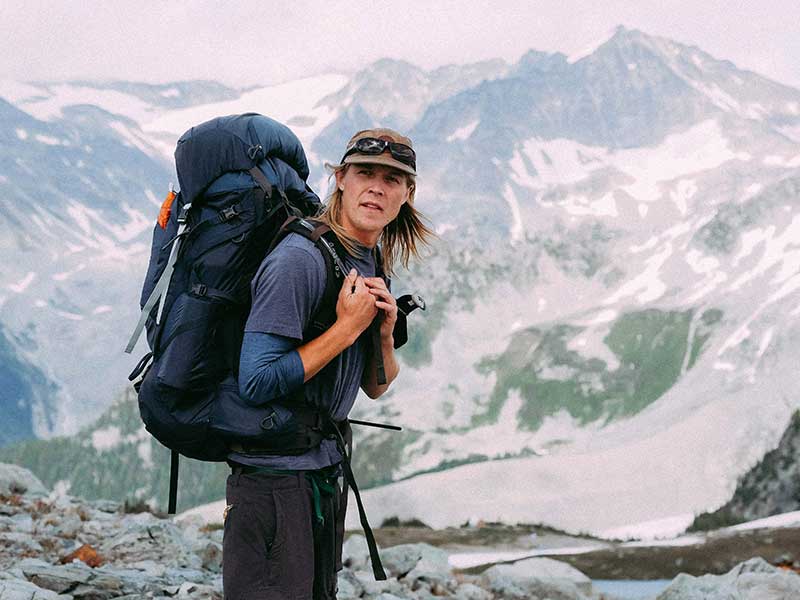
The hiking or trekking is a great outdoor sport regularly performed by many people. In most cases, it awakens a greater appreciation and respect for nature. It's the perfect weekend or even daytime activity for getting away from the hustle and bustle of modern city lifeand has proven time and time again to be a great way for friends and family to participate in an activity together.
Contact with the nature and physical activity is what characterises hiking and trekking. But there is more to it than that; it is a philosophy of life for those who practise them regularly.
Another characteristic of hiking is that it seeks to bring people closer not only to nature, but also to the knowledge of the culture of placesusing communication routes, such as paths and trails, often centuries old.
While hiking is one of those outdoor activities that does not require an exquisite set of physical skills and abilities, except for endurance and walking and some balance in some cases, it is true that it does require a certain level of physical fitness. by following certain guidelines your first experience of the sport can be much more enjoyable..
Origins of trekking and hiking
The word "trekking"It came into use in the 1980s. Some sources claim that it comes from the term "trek"The term is of Anglo-Saxon origin, while others indicate that it is of South African origin.
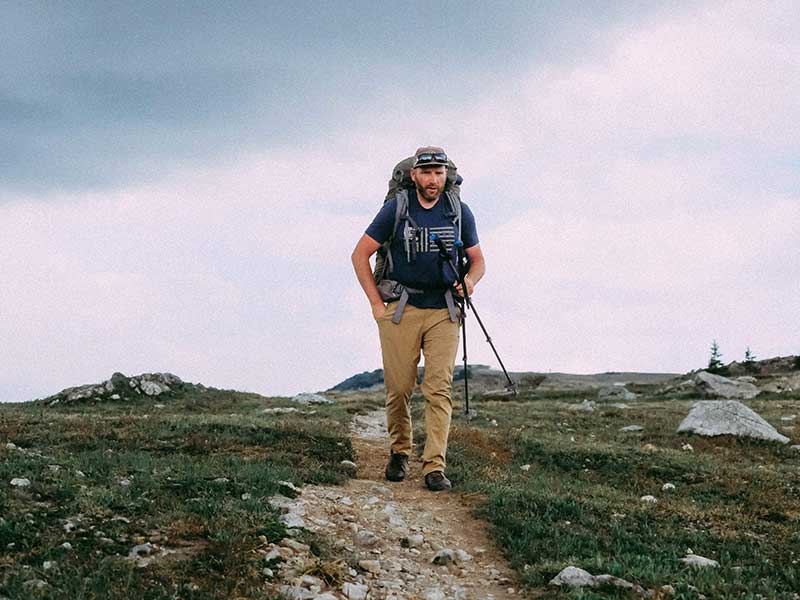


What is true is that the word trekking began to be used to refer to a long and complicated journey, particularly by climbers in the highlands. Himalayan mountain ranges and other summits of South America.
In the 1980s, the word trekking was used to refer to the journey to the base of the mountain, before starting the actual ascent.
The hiking refers in particular to long and demanding hikesThe routes are on established roads and trails, not so far away from civilisation.
Walking outdoors for pleasure is a practice that began to develop in the 18th century.associated with the nascent romanticism that implied a change in the way of looking at nature. Before that, walking in the open air was directly associated with poverty and even vagrancy.
Getting Started Guide: Tips and recommendations.
There are a number of basic recommendations to follow before embarking on any mountaineering activity.
- Routes need to be planned to be followed before starting the excursion. It is necessary to gather all the necessary information and not to leave any detail up in the air.
- Check weather conditions that will prevail at the time of the trek. This can be a serious issue when trekking at altitude.
- Wearing the right clothes for practice. Hiking boots, warm clothes and mackintoshes in case the weather conditions change.
- Don't forget the basic equipment accessories as a compass, torch, first aid kit and a map of the place.
- It is important to plan meals and drinks that you will take with you. When walking on remote trails, you will not find supplies, so carry what you will eat. Do not skimp on the hydration.
- Spring is one of the best times for hiking, due to the mild temperatures that characterise it.
Hiking and trekking equipment
1. Trekking clothing
Hikers wear different clothing depending on the route. But as a general rule, you should wear light, hard-wearing clothing that protects you from the elements. It is desirable that it transports - transpires - moisture away from the skin to the outside. Cotton fabric is not suitable, especially in cold or even very hot conditions, as it absorbs moisture and ends up getting warm. We recommend that you find out about the three-layer mountain system. In very cold environments, protect your head with a hat. You can also wear a visor to protect yourself from the sun on sunny days.
Mountain boots
A separate chapter deserves the suitable footwear for mountaineering related activities. When choosing the right boots, it is important to bear in mind that the wrong footwear will may cause discomfort, injury or even abandonment of the excursion..
A good pair of hiking boots is a must for every hiker. Boots will protect you from the elements and water, plus on very rocky or uneven terrain, they will keep your ankle stable. In addition, hiking boots should have an aggressive sole to make walking on difficult surfaces easier. Trail or trekking shoes may be suitable for easier terrain or dry environments.
- Low-level and approach footwear. These shoes are made of flexible materials. It allows you to move mainly on terrain where there are light trails. Although lately, the use of trainers in hiking practices has become widespread. Within this category we would have the XA PRO 3D GTX (click here to buy it on Amazon).
- All-weather hiking boots. Boots of this type are suitable for use at any time. Lighter than a boot for more adverse conditions typical of winter in the mountains. The Chiruca-Dynamic is a valid boot that can be found from 149 euros on Amazon.
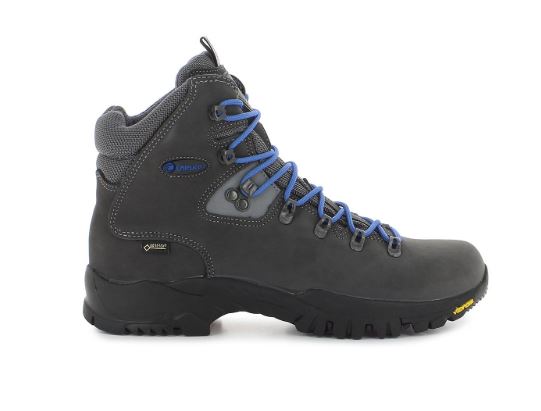
- Hiking or trekking boots. The sole of these boots is much thicker, usually semi-rigid. They withstand winter weather conditions. They can also be fitted with basic crampons. With them, the foot will be protected in more complicated and unstable terrain. The model BESTARD TRILOGY can be used for demanding traverses.
- Mountaineering and high mountain boots. These boots are usually made of leather or plastic derivatives. They are also suitable for use in the high mountains and in adverse weather conditions. La Sportiva Nepal Evo Gtx (see on Amazon) is the model used in extreme high mountain conditions.
3. rucksack
You will need a good backpack to carry supplies, your equipment and other necessities. Water bottles are also necessary for any hike. You should stay hydrated during the activity, as we lose a lot of water, through sweat, when the physical activity is demanding. Food should also take up a good amount of space in your bag, just be sure to pack food that is compact, not difficult to prepare and provides quick and efficient energy to the body.
If you have planned a demanding trek in adverse conditions, you will need your backpack to be suitable for it. Use a stable, waterproof backpack that has a cover to protect it from rain. Take some plastic bags to store your rubbish during the trek.
When it comes to choosing a backpack The duration of the hiking route must be taken into account. For day trips a backpack of 25 litres. If the distance is medium or we have to carry more equipment than usual given the conditions we will encounter we will go for a 30 to 40 litre backpack. For multi-day crossings it is normal to carry a rucksack of more than 60 litres.
4. Severe weather equipment
Depending on the weather, you may need to carry extra gear. When it rains, you'll need a good mackintosh or lightweight poncho to keep the cold and rain off your body. Sunglasses are ideal for sunny walks and will save your eyes from sun exposure, equally if you plan to walk in the snow. Use sunscreen on snowy days or in environments with strong sunshine.
You may be interested in:
5. First aid kit
Falls often occur during hikes, so you will need a first aid kit (on Amazon from 19,19 euros) to treat cuts, scrapes and other injuries.
You will also need some antihistamine for any allergies or body reactions, as well as some cream against allergic rashes that can occur due to exposure to dust, plants and animals.
Hiking trails
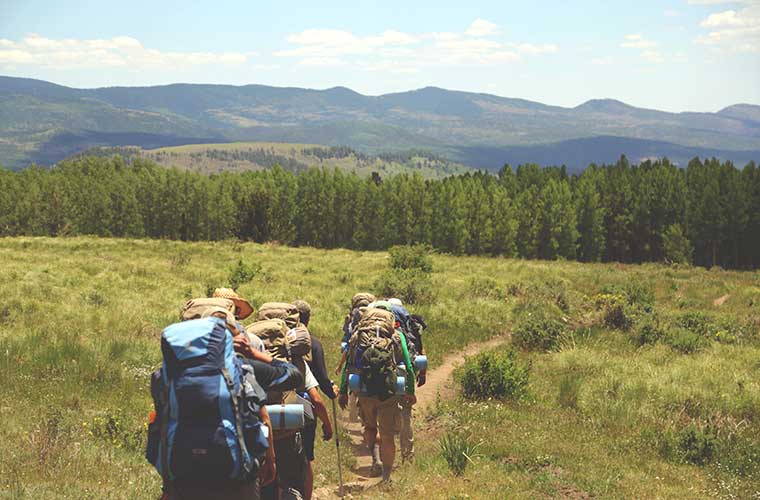
For hiking, there are a huge number of routesThe most important of which is the cultural, ethnographic and historical richness and the beauty of the countryside. First of all, you should know where you are going. If you are going on an easy walk with other experienced hikers, you don't have to worry too much about this. Your companions will probably know the area well and have sufficient skills to take you to the top or through the route.
The best trails, routes and trips all over the world.
Here are trips that offer unforgettable experiences and fantastic outdoor adventures. And because the selection of trails can never be large enough, we invite you to let your imagination run wild and follow your intuition, pack your backpack and put on your boots because your next hiking trip is just around the corner.
- Routes in the Pyrenees. On this page we will try to be the definitive guide if you want to go trekking in the Pyrenees. You may also find useful this selection of ascents in the Pyrenees. If you are looking for a emblematic circular route in the Pyrenees we recommend that you follow this link (Click here).
- You may be inspired by the following article in which we wrote ".The most beautiful mountains in Spain"a careful selection, as well as ".12 forests to get lost in autumn".
- If you are looking for a route that is located between the world's most attractive trailsyou can still start with a Trekking in Nepal and the Everest Base Camp or the Annapurna Circuit may be an option. In Africa, the Kilimanjaro: the trekking of Tanzania will surely surprise you. But the options are endless: the Chimborazo: climbing volcanoes in Ecuador (you can also review our list of volcano ascents most interesting treks in the world). Trekkings in the USA such as the Pacific Crest Trail or the Appalachian Trailand not forgetting places like the Grand Canyon o Yellowstone. And if we're talking about emblematic routes, we would complete the list with the The Way of St. James and the Pyrenean Path.
Adventure travel and trekking
Whether alone or in a group, in the mountains, at the seaside or in the mountains: there is an interesting offer of adventure trips, specials, trekking-oriented holiday packages and guided tours with a wide variety of outdoor adventures. Pack your rucksack, lace up your boots and start your own outdoor adventure! In the following link you can find offers on adventure trips, excursions and trekking..
- Kilimanjaro Climbing (See travel package here). We also recommend you to have a look at our guide to the kilimanjaro trekking.
- Etna trekking (see package here).
- Everest Base Camp Trek.
- Annapurna Circuit Trek. We recommend you take a look at our guide to theGokyo Valley and Everest Base Camp.
- The Manaslu Trek.
- If you are looking for a hiking trip in Europe, you might be interested in this one. Trekking in Albania (see offer and details).
- The Salkantay Trek leads to the ruins of Machu Picchu. Ideal if you are looking for a trek in Peru.
Benefits of trekking and hiking
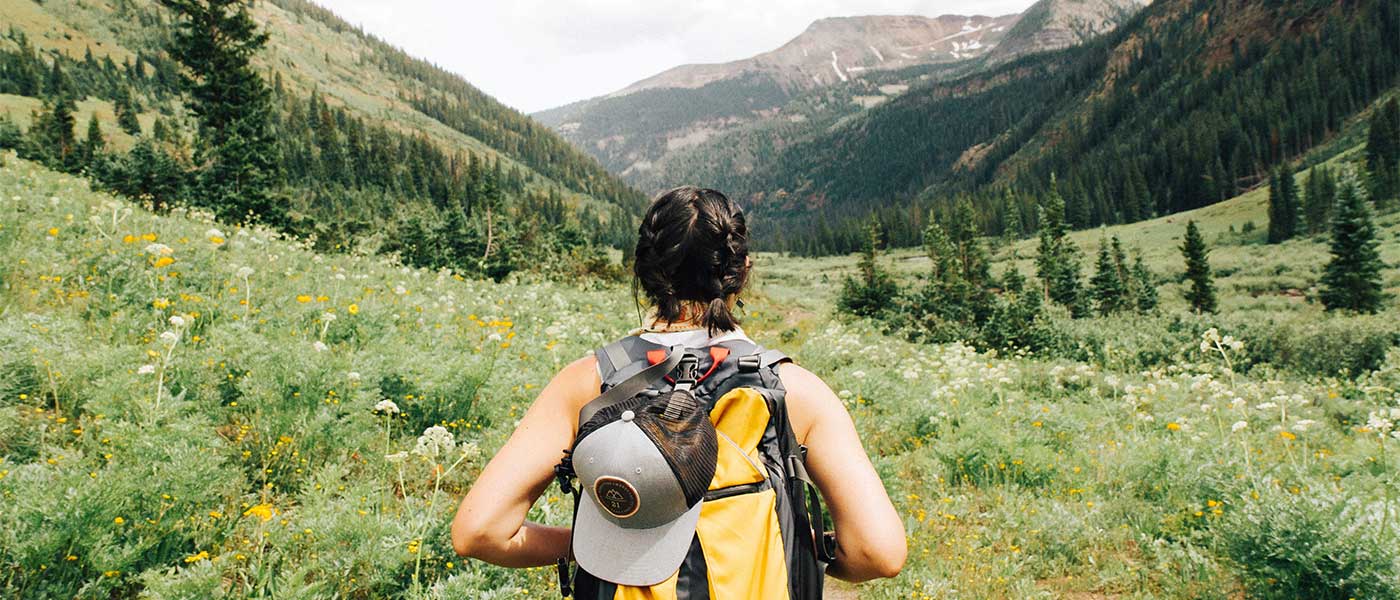
In principle, physical activities are beneficial for the overall development of the human being. Even more so when it comes to disciplines such as hiking or trekking, in addition to the benefits of sporting activities, the links with nature and the enjoyment which involves the contemplation of beautiful landscapes.
Another advantage of trekking is that it can be done with different degrees of intensity. For those who have not had much practice, they can choose routes suitable for beginners, while the more advanced can do routes with distances that require a certain level of preparation.
For trekking you need a more intensive preparation and excellent physical fitnessThe course is designed to provide the necessary knowledge of cartography and the necessary mountain equipment.
Both activities are considered an environmentally friendly way of tourismThe impact they have on nature is very low. However, there are some basic rules to be respected for a harmonious practice of both disciplines.
Rules of hiking
- Respect for Nature. This is the most fundamental rule for trekking and hiking. Keep in mind that we can often reach places with fragile ecosystems, which are susceptible to damage.
- Security. This is also basic. Sometimes marked trails are used, so the risk of accidents or getting lost may be lower. However, as hiking in more isolated areas can be off-trail, there are certain additional risks, for example, unfavourable weather conditions or disorientation of hikers can create dangerous situations.
- Zero vehicles. The use of motorised vehicles is not permitted for mountaineering and trekking. The reason for this is that the environment and its components should be disturbed as little as possible. It seems obvious.
- Maintaining harmony. The search for harmony between hikers and the environment will allow for maximum enjoyment of the activity.
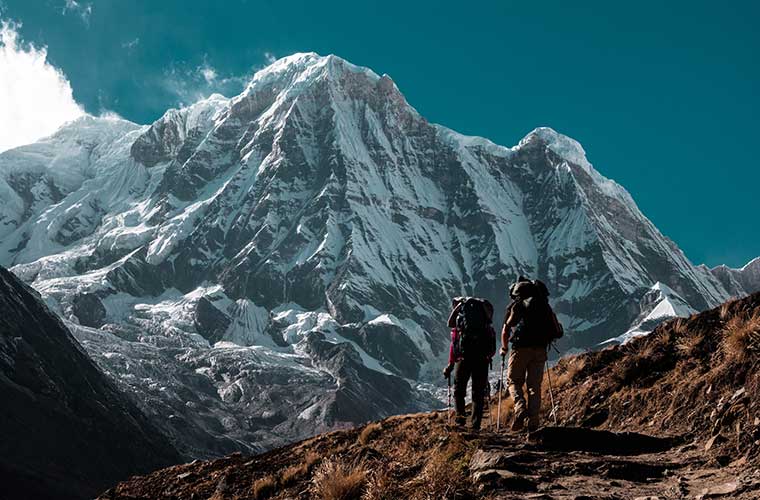
Find books and maps for your next trip
Of course, if you are trekking without a guide for the first time in an unfamiliar area (which is not recommended), you will need orienteering skills and a good map. Of course, it would be better if you start at first in places you know best, before going into difficult or unfamiliar areas. And above all, be well informed in advance: consult the map of the area, review the guidebook written by an expert of the place, prepare the information you will take with you to guide you in the place.
If you are looking for information on routes in the Pyrenees, we recommend the book by Pyrenees circular crossings between refuges (click here to buy it on Amazon)or if you are going to climb a summit the one in Pyrenees 3.000m Guide. If you are going with children, it will come in handy Easy routes through the Pyrenees (see in the Casa del Libro).
Trekking and hiking maps
If you are going on a hiking or trekking trip, reliable maps are an absolute necessity. In any bookshop or online shop (Find your Map) a wide range of hiking maps, topographical maps and official maps of the region are available for different outdoor activities. They will give you detailed information about the terrain, such as paths, trails, cycle routes, contour lines, shelters, car parks or angles of inclination.
Find books and hiking guides
You should develop your skills, with manageable routes that you are familiar with at first. Guidebooks can help you tackle more difficult and less travelled trails. Start with easy routes and leave the difficult ones for when you have more experience.
You can find your printed travel guide for your next adventure. A good guidebook will uncover interesting excursions and places to visit. For the area you want to visit, you're sure to have a list of hiking and trekking guides offered by renowned publishers ranging from classic hiking and travel guides to thematic travel guides specialising in hiking, mountaineering and travel.
*All purchase prices included in this article are current as of 21/03/2019.
Fastpacking is not about going faster. It's about going lighter.
If you come from classic trekking, this is the next step: learning to move with less weight,
more fluid and enjoying every kilometre more.
Join the channel and start discovering what lightness feels like.

